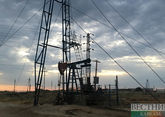Natural gas output from the U.S. shale formations is at a record high. So are recoverable gas reserves, according to the Potential Gas Committee. This sounds like good news for everyone except producers: there just are not enough pipelines to transport the gas, which is already uncomfortably cheap because of the abundant supply.
Oil Price reports in its article Why U.S. Shale Drillers Can’t Sell Their Gas reports that as natural gas prices recovered from the lows they hit last year on oversupply, shale producers became bolder and started ramping up, just like oil drillers did. As a result, according to Bloomberg data from June, output in the Marcellus shale and the Permian has hit a record. In the Marcellus shale, daily output is close to 20 billion cu ft, while associated gas in the Permian is creeping closer to 10 billion cu ft daily.
As of last week, the Energy Information Administration calculated gas output in Marcellus at 19.55 billion cu ft daily. Output in the Permian was 8.49 billion cu ft. Utica produced 4.45 billion cu ft of natural gas. Haynesville and Eagle Ford both yielded more than 6 billion cu ft of gas. Next month, the EIA projects shale gas production to continue rising across the board, reaching a total 52.858 billion cu ft daily, from this month’s estimated 52.021 billion cu ft.
Meanwhile, West Virginia’s Department of Environmental Protection has ordered Energy Transfer Partners to stop work on the construction of Rover – set to be the biggest natural gas pipeline project under construction in the country. The order is yet another stumbling block for the US$4.2-billion, 713-mile pipeline that was supposed to transport gas from Utica and Marcellus to other parts of the United States. Earlier this year, a drilling fluid spill along the construction route in Ohio prompted the Federal Energy Regulatory Commission—the body in charge of gas pipelines—to ban horizontal drilling during construction.

The delay of the Rover completion—until this fall, probably—is bad news for ETP, certainly, though the company behind the Dakota Access pipeline should by now be used to such hurdles. It’s also bad news for producers because, as the Wall Street Journal’s Spencer Jakab writes in a recent story, Utica and Marcellus gas is selling at a substantial discount to the Henry Hub benchmark.
At the end of the day, the pipeline capacity shortage is bad news for consumers as well, for safety reasons. Pipelines have been proven to be the safest way of transporting petroleum, natural gas, and oil and gas products, when compared with other means of transportation such as trucks and railway. Charles Hughes, in a piece for U.S. News and World Report, cites calculations of 0.66 incidents per billion ton-miles along oil pipelines for the period 2007 to 2016, and 0.73 for natural gas pipelines. These figures compare with 2.20 incidents per billion ton-miles for trains and 7.11 incidents per billion ton-miles for trucks.
The situation is pretty simple: the pipeline shortage is making it difficult for everyone from producer to consumer to make the best of the current abundance of natural gas supplies. Environmental considerations are certainly legitimate and must be addressed immediately, which ETP should know by now after the whole Dakota Access debacle. Yet, Jakab notes the company had a very short period to complete the construction of the pipeline, which may have led to the incidents that have now caused its delay. The fact remains, America is short on pipelines to transport its natural gas from the places where it is in oversupply to the places where it is needed.










